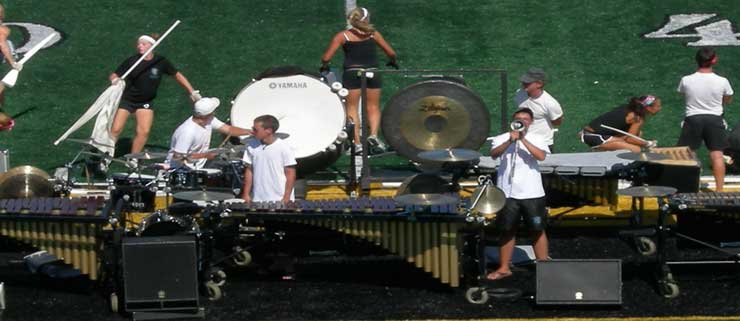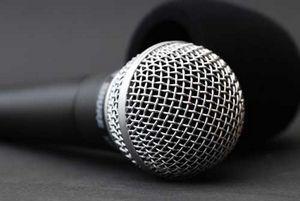.jpg) Richard Mould has written an article detailing how changing single notes in a chord affect its quality from major to minor to diminished, etc. The article is written primarily for guitarists, but the general concepts of chord structure are constant throughout all varieties of musical instruments.
Richard Mould has written an article detailing how changing single notes in a chord affect its quality from major to minor to diminished, etc. The article is written primarily for guitarists, but the general concepts of chord structure are constant throughout all varieties of musical instruments.
{mosimage}Many musicians, myself included, have wondered what would happen if we were to change one note in a key. How would the chord structures change? How much of the key will remain unaltered? Will sharpened and flattened notes have the same result? Up until now, I have been doing a very basic mental math with complex key modifications. In this paper, I have charted out every possible scenario of single-note alterations. However, I have not detailed any chord changes resulting from the change of more than one note. I will write a second, more in-depth, follow-up analysis detailing the similarities and differences between all of the dual note alterations that are possible in any major key.
Basic Rules:
A change in one note of a key will change the structure of three chords because each note exists as a part of three different chords. A note can hold one of three different positions in a chord, as; the root, the third, or the fifth. For example, in the key of C Major, the C note is the root of the C major chord, the third of the A Minor chord, and the fifth of the F Major Chord. If the C note is augmented (sharpened), those same chords become C#dim, A Major, and F#5(or augmented), respectively.
There are seven notes in each key, out of a total of twelve available notes. Four of the seven notes of a key can be altered; the 2nd, 3rd, 5th and 6th. The fourth and seventh tones cannot be altered. If the seventh tone is flattened, the key will change; a flattened 7th tone results in a shift to the major key of the 4th tone, i.e. C Major becomes F Major. If the 4th tone is sharpened, the key will change; a sharpened 4th tone results in a shift to the major key of the 5th tone, i.e. C Major becomes G major.
For the purposes of this analysis, we will not be flattening the seventh tone, sharpening the fourth tone, or altering the root note in any way.
Concerning the notes that can be altered, some can be sharpened or flattened, and some can be either sharpened or flattened. The 2nd can be sharpened or flattened, the third can be flattened but not sharpened (if sharpened, it becomes the 4th), the 5th can be sharpened or flattened, and the sixth can be sharpened or flattened.
Let’s take a look at what happens to the chord structures of a key, when we shift the alterable pitches either sharp or flat.
The Charts (Left Column is original chords in C Major; Right Column is chords resulting from note change. All examples are in C Major):
The Sharp 2nd (D#)
C D# E F G A B C
C Major -- C major
D minor -- D# sus2 b5
E minor -- E minor
F major -- F major
G major -- G Major #5
A minor -- A minor
B dim -- B minor b5
The Flat 2nd (Db)
C Db E F G A B C
C Major -- C major
D minor -- Db major #5
E minor -- E minor
F major -- F major
G major -- G dim
A minor -- A minor
B dim -- B sus2b5
The Flat 3rd (Eb)
C D Eb F G A B C
C Major -- C Minor
D Minor -- D Minor
E Minor -- Eb Major
F Major -- F Major
G Major -- G Major
A Minor -- A Dim
B dim -- B Dim
The Sharp 5th (G#)
C D E F G# A B C
Sharpen the 5th (G) to G#. The chords become:
C major -- C Major #5
D minor -- D Minor
E minor -- E Major
F major -- F Major
G major -- G# Minor
A minor -- A Minor
B dim -- B Dim
The Flat 5th (Gb)
C D E F Gb A B C
C major -- C Major b5
D minor -- D Minor
E minor -- E sus2
F major -- F Major
G major -- Gb Major
A minor -- A Minor
B dim -- B Dim
The Sharp 6th (A#)
C D E F G A# B C
C major -- C Major
D minor -- D Minor #5
E minor -- E Major
F major -- F sus4
G major -- G Major
A minor -- A sus2
B dim -- B Dim
The Flat 6th (Ab)
C D E F G Ab B C
C major -- C Major
D minor -- D Dim
E minor -- E Minor
F major -- F Minor
G major -- G Major
A minor -- Ab Major
B dim -- B Dim
Analysis:
Seven changes can be made within a key without changing the note around which the musical pieces centers (the key note). This is very interesting, considering that we have only implemented 4 notes that do not belong to the original key. How is this possible? 7 ways to approach 4 notes? There are seven different possibilities because notes that are not in the original key can be reached by either sharpening one note, or flattening another. Although the same note may be introduced to the key, the outcomes are different depending on how the note is reached. This is because, if one note is sharpened or flattened, then the original note does not remain (i.e. F - F#, or G- Gb). The note that we choose to alter, in order to achieve the desired result, determines which note is going to be excluded in the resulting key.
Suppose our goal is to modify a key so that we have an F#-note in the key. If the F is sharpened, there will not be an F chord in our new key, and if the G is flattened, there will not be a G chord. It is a matter of exclusion, and it can be very confusing because an F# note is the exact same note as a Gb. At this point, it becomes apparent that keys can be very complicated.
Two-Note Alterations:
I will now offer an example of what happens to a key when more than one note is altered:
Example; C Major, flat 2nd, sharp 5th
C Db E F G# A B C
The chords in this key are; C Major #5, Db Major, E Major, F major, G#minorbb5, A Minor, Bsus2 b5
Just as when naming chords, we can base the name from any note that we choose. The C Major Key with a flat 2nd and a sharp 5th is comprised of the same notes as an F Major Key with a sharp 4th, flat 6th and sharp 2nd. The universe of possibilities shrinks when we take enharmonic keys into consideration.
Why?
The charts above can be very useful when writing music. Suppose, for example, that I want to write a song, in a dark sounding 7-tone key. I could look over the chart and quickly located the C Major Key with a Flat 3rd, which contains two naturally occurring diminished chords, and two minor chords. Of course, it does seem silly to refer to a key as a C Major Key, when the C chord of this particular key is a C Minor but I am trying not to confuse anybody.
Transposing music into modified keys can breathe new life into a song. The results can be tedious, painful, or enjoyable, but always interesting. Sometimes the changes are very pleasing, such as the case of the sharpened 5th- the secret of all Spanish guitar. I would suggest toying around with these ideas, because it seems that too much music adheres to music theory guidelines, as if they were rules- music is not governed by laws.
You should have fun with uncommon chords and progressions, and don’t be afraid to play the sus2b5 chord, or any other ugly-looking chords. Sometimes they fill that void in the middle of a song that you just can’t seem to fill with any standard major or minor chord.
ABOUT THE AUTHOR:
Richard Mould grew up in Norman, Oklahoma and Seattle, Washington. He has played the guitar for a long time.







 Scroll down to view the comparison chart of over a dozen different portable digital audio recorders.
Scroll down to view the comparison chart of over a dozen different portable digital audio recorders.